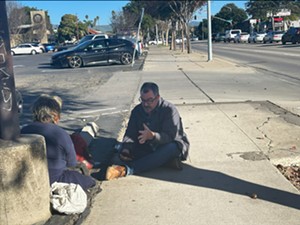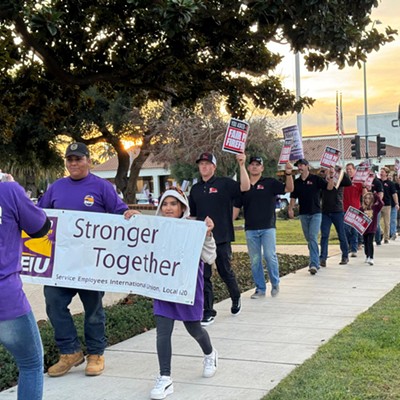For the first time in more than three years, Santa Barbara County’s Point-in-Time Count results showed a decrease in the number of people experiencing homelessness.
“We’re hopeful that all the efforts and the county and Continuum of Care and homeless service providers is really beginning to make a difference in people’s lives, but we’re hoping that it will make a difference on the system level as a whole,” said Sylvia Barnard, who serves as the Santa Barbara/Santa Maria Continuum of Care chair.
Barnard and her team helped coordinate volunteer teams in Santa Maria, Lompoc, and Isla Vista for the count—a U.S. Housing and Urban Development-required annual process to count all individuals experiencing homelessness on a given night. This year’s count took place on Jan. 25 with more than 400 volunteers.

Countywide, volunteers counted 1,887 people experiencing homelessness—down from 2022’s 1,962, according to the preliminary results. About 41 percent of individuals (780 people) were identified in mid and North County, and 59 percent (1,107 individuals) were in South County.
“The Point-in-Time Count is definitely showing that having more bed availability has allowed more individuals to come into the shelter systems and the added outreach teams to build trust and bring time indoors is beginning to show in our Point-in-Time Count,” Barnard said.
About 140 shelter beds and more than 800 opportunities for permanent housing have been added countywide, and about 1,050 people transitioned out of homelessness and into permanent housing, according to preliminary results. Barnard added that the county’s Emergency Housing Voucher program, which provided 272 long-term rental subsidy vouchers, and the county’s investment in a supportive services team also assisted in housing rates.
“The team is countywide and focusing on following [individuals] into housing to increase housing retention, and it definitely impacts the system where we’re not seeing people recidivate back into homelessness,” she said.
Kimberlee Albers, the county Homelessness Assistance Program manager, said that the county served more individuals than they had in previous years with a 49 percent increase from 3,094 in 2019 to 4,620 in 2022.
“There was this inverse relationship. In the years we saw the shelter count going down because during the pandemic it was tougher; we had outbreaks and things going on with congregate shelters, the number of people sheltered was decreasing,” she said.
During this time, the county had a large number of beds come online with the purchase of Hedges House of Hope in Isla Vista, the DignityMoves project in Santa Barbara, and reopening the third floor in the Salvation Army, providing an additional 58 beds in Santa Barbara, she said.
“We didn’t have additional shelter beds between 2022 and 2023 in Santa Maria, but they are on the way,” Albers said. “Hope Village will bring 94 rooms of interim housing to the Santa Maria Valley, and we really hope it will impact those numbers this year.”
The groundbreaking ceremony for the project was supposed to happen on March 14 but was postponed due to the rain. A new date has not been announced, but the county is planning on beginning construction soon, she said.
“What we see in Santa Maria is a lot of really great housing projects moving forward and that’s exciting; that isn’t happening in every jurisdiction. We’re really encouraged to see Santa Maria get housing projects moving,” Albers said.












